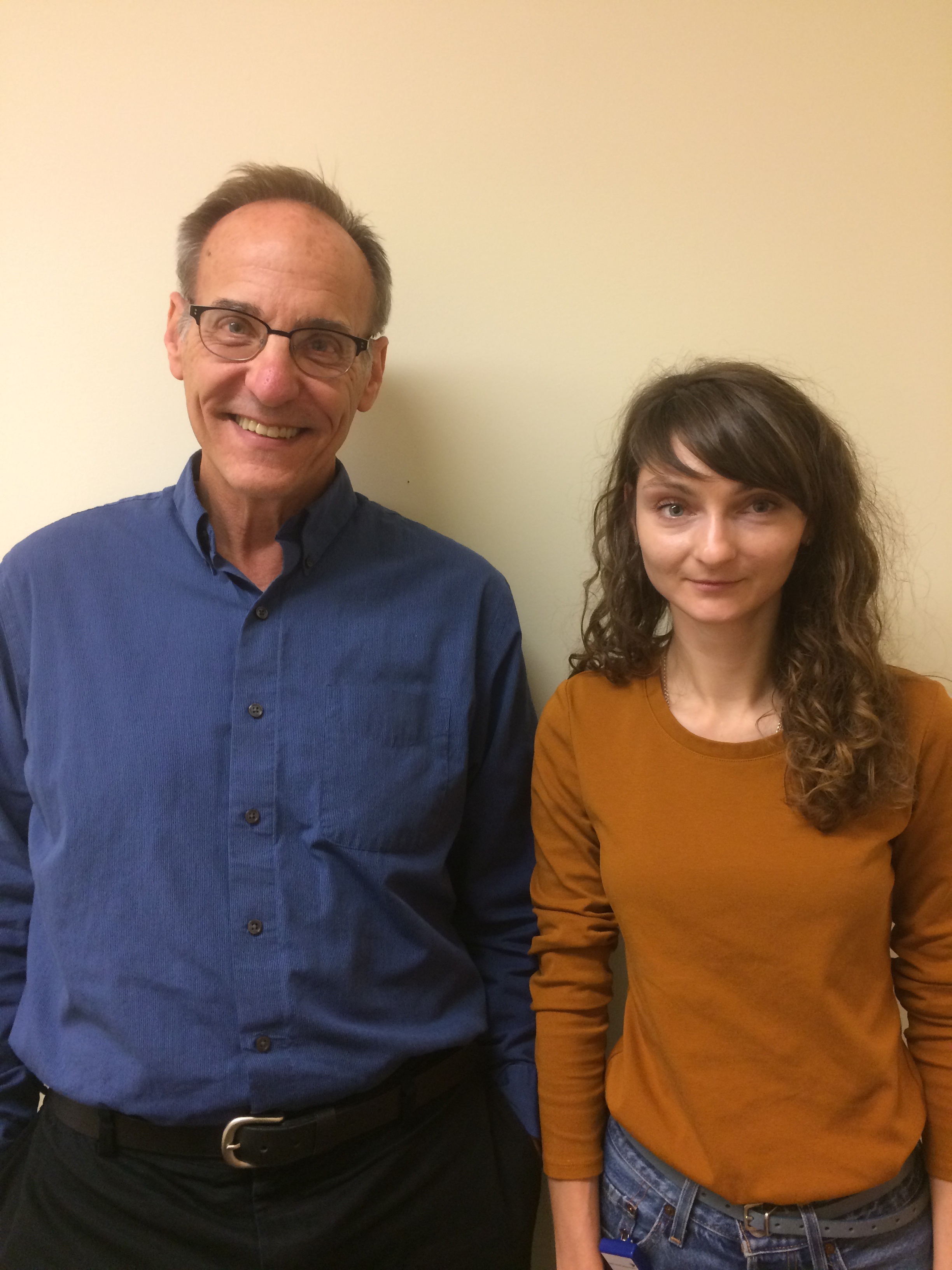Peer Reviewed Cancer



Posted March 18, 2020
Steven Balk, M.D., Ph.D., Beth Israel Deaconess Medical Center, Boston
Paula Fraenkel, Beth Israel Deaconess Medical Center, Boston

Dr. Steven Balk and Paula Fraenkel
Ionizing radiation (IR) has the potential to cause severe skin and/or tissue damage. Individuals exposed to IR have an elevated risk of being diagnosed with solid cancers or blood malignancies. Chronic Ph-negative myeloproliferative neoplasm (MPN) is a disease that prompts the bone marrow to produce abnormal numbers of red blood cells, platelets, or white blood cells. Chronic MPNs could progress to bone marrow failure, myelofibrosis, or acute leukemia.
Dr. Steven Balk and Paula Fraenkel, from Beth Israel Deaconess Medical Center, were awarded a FY15 Idea Award with Special Focus to perform the first systematic evaluation of genetic alterations in patients with MPNs who have been previously exposed to IR. Preliminary studies revealed that IR-exposed individuals displayed a higher incidence of severe MPNs. This finding led Dr. Balk and Fraenkel to hypothesize that (1) IR-exposed individuals with MPNs present a different range of mutations than unexposed individuals with MPNs and (2) a genetic analysis of blood samples from these patients would help identify novel molecular classifications, predictive biomarkers, and possibly new treatment options.
Dr. Balk and Fraenkel collaborated with Dr. Sergiy Klymenko and Larysa Poluben (graduate student) from the National Research Center for Radiation Medicine in Kyiv, Ukraine, to perform the first systematic evaluation of genetic alterations in IR-exposed patients with MPNs. Of the samples provided by Dr. Klymenko, 32% were obtained from IR-exposed MPN patients as a result of the Chernobyl Nuclear Power Plant disaster. Dr. Balk’s team performed Real Time PCR and Sanger sequencing to evaluate the predominance of Janus Kinase 2 (JAK2), Thrombopoietin Receptor (MPL), and Calreticulin (CALR) mutations. Dr. Balk’s team observed that IR-exposed MPN patients have a lower rate of JAK2 mutations and a higher rate of CALR type 1-like mutations compared to unexposed patients. These results support a hypothesis of Dr. Balk and Fraenkel that IR-exposed and unexposed patients with MPN display different ratios of MPL, CALR, and JAK2 mutations. However, a subset of MPN patients, 10-15%, don’t have these mutations. Dr. Balk’s and Dr. Klymenko’s teams also assessed patients for novel mutations. They used whole exome sequencing and high-density single nucleotide polymorphism array analyses to compare DNA from blood samples from IR-exposed and unexposed patients with primary myelofibrosis (PMF) in order to find additional genetic alterations that might contribute to the development of MPNs and potentially explain why IR-exposed patients frequently develop more severe disease.
Novel mutations were evaluated using a genomic analysis tool for assessing similarity with known cancer-causing mutations. Dr. Balk’s team also targeted 309 cancer-related genes in IR-exposed and unexposed MPN patients (negative for usual mutations in JAK2, MPL and CALR genes) to explore potential new mechanisms for MPN. Results showed that a subgroup of IR-exposed MPN patients display disease that is driven by a separate mechanism. Dr. Balk’s team identified a number of new mutations in these patients that may contribute to this newly identified mechanism for developing MPNs and provide novel biomarkers or targets for future therapies. The study from Dr. Balk and Fraenkel provided the evidence that IR-exposed MPN is driven by a diversity of oncogenic genomic alterations.
In addition to gathering all of the data described, Dr. Balk’s team established a biospecimen database containing DNA samples from peripheral blood mononuclear cells and medical histories and bone marrow biopsy slides from patients with MPNs. The data and samples collected offer a tremendously valuable resource for use by investigators as they to continue to examine the effects of IR exposure on the progression of MPNs.
Publications:
Poluben L, Puligandla M, Neuberg D, et al. 2019. Characteristics of myeloproliferative neoplasms in patients exposed to ionizing radiation following the Chernobyl nuclear accident. American Journal of Hematology 94:62–73.
Poluben L, Bryke CR, Hsu Y, et al. 2019. Copy number alterations and copy-neutral loss of heterozygosity in Ukrainian patients with primary myelofibrosis. Exp Oncol. 41(1):53-56.
Links:
Last updated Thursday, December 5, 2024














